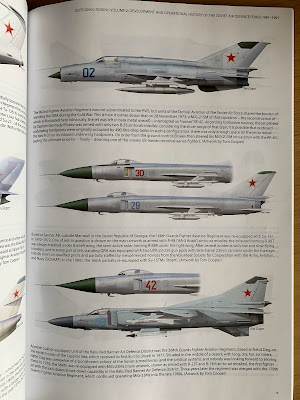As the saying goes, good things come to those that wait, a refrain your humble scribe hopes is true when volumes two and three of From Vultures to Vampires eventually make their way into the hands of more than patient Kickstarter backers, but that's a tale for another time. Today, we're going to have a look at another long awaited publication that overshot its original estimated publication date by well over a year and a half. What went wrong?
Actually, it's more a case of what went right, as the editor/author of this project found himself Lost in a Cult (sorry, had to do it!), and that award-winning independent publishing group have gone from strength to strength since the very first volume of their journal, [lock-on]. Naturally, paid work should take precedence over a personal project (games, bills, eating, you know, the essentials of life), but Andrew was very conscientious in keeping backers updated as to why Year Two was delayed, and the end result does not disappoint.
Rocking in at over 180 pages (compared to the 110 of Year One), this A5 book is a monument to what is arguably the best second year software catalogue of any console. It's also a reminder that, whilst the games selection on the Dreamcast was a thing of beauty, the financials of Sega themselves were a bit of a nightmare, and by the end of the 128-bit wonder's sophomore year, Dreamcast production had finished.
Featuring contributions by a number of names familiar to the retro scene, Dreamcast: Year Two begins with a walkthrough of that tumultuous year and a rather neat synergy with the five stages of grief. Then come the interviews: again, there are some familiar names and all have some interesting comments to make. A quartet of features take the reader to near the half way point before we get to the really fun stuff: the games.
If you look at the contents page above, you'll see many a famous Dreamcast titles in there, including two of my all time favourites: Metropolis Street Racer and Fur Fighters - honestly, the latter, despite its funky controls, is one of the best third person shooters ever made. The highlight is the piece on Spirit of Speed 1937, as well as an interview with the managing director of the studio responsible for the game. Widely regarded as terrible (some consider it one of the worst games ever made), its inclusion here is a lovely rebalancing, not putting it on a pedestal, but providing a re-appraisal that considers the good points the game has too.
There are many screenshots included, as well as original artwork for some of the featured titles, interviews and the like. Production quality is high and, overall, this is a worthy follow up to Year One, and one can but hope that a Year Three Kickstarter is not too far away.
Speaking of Kickstarter, as a backer, there were also some more goodies too - postcards of the artwork, a couple of bookmarks, a sticker, and a DCY booklet centred on a period of gaming from 1998 to 2002. Five features and a round of of opinion pieces, this is a nice add on and well worth a read.
So there we are then - better late than never and definitely worth the wait, Dreamcast: Year Two continues the fine work in Year One and promises a cracking finale for Year Three - if only to see Headhunter get some more love - truly a classic of its time. You can follow the author on Twitter here and, although he may not have any further copies of Year Two for sale (he reckoned they'd be gone by the beginning of June), you never know, Lost in Cult might be persuaded to support a reprinted single volume once the series is complete... I mean, when you're Operations Director, you have to have some say, surely? ;-)
In any case, although much has been written about the Dreamcast and it's library over the years, this worthy tome adds yet further flavour to the machine's history and is highly recommended to all. Andrew and every single contributor to the book should be congratulated on a job very well done!














